It looks like you're using an Ad Blocker.
Please white-list or disable AboveTopSecret.com in your ad-blocking tool.
Thank you.
Some features of ATS will be disabled while you continue to use an ad-blocker.
share:
This stunning view includes both the terminator and the limb. Basho crater, an 80-km-diameter, complex crater with a prominent central peak, can be seen near the center of the scene.
The Wide Angle Camera (WAC) of the Mercury Dual Imaging System (MDIS) of the Messenger spacecraft mission took this close view on January 11, 2012 with a resolution of 713 meters/pixel.
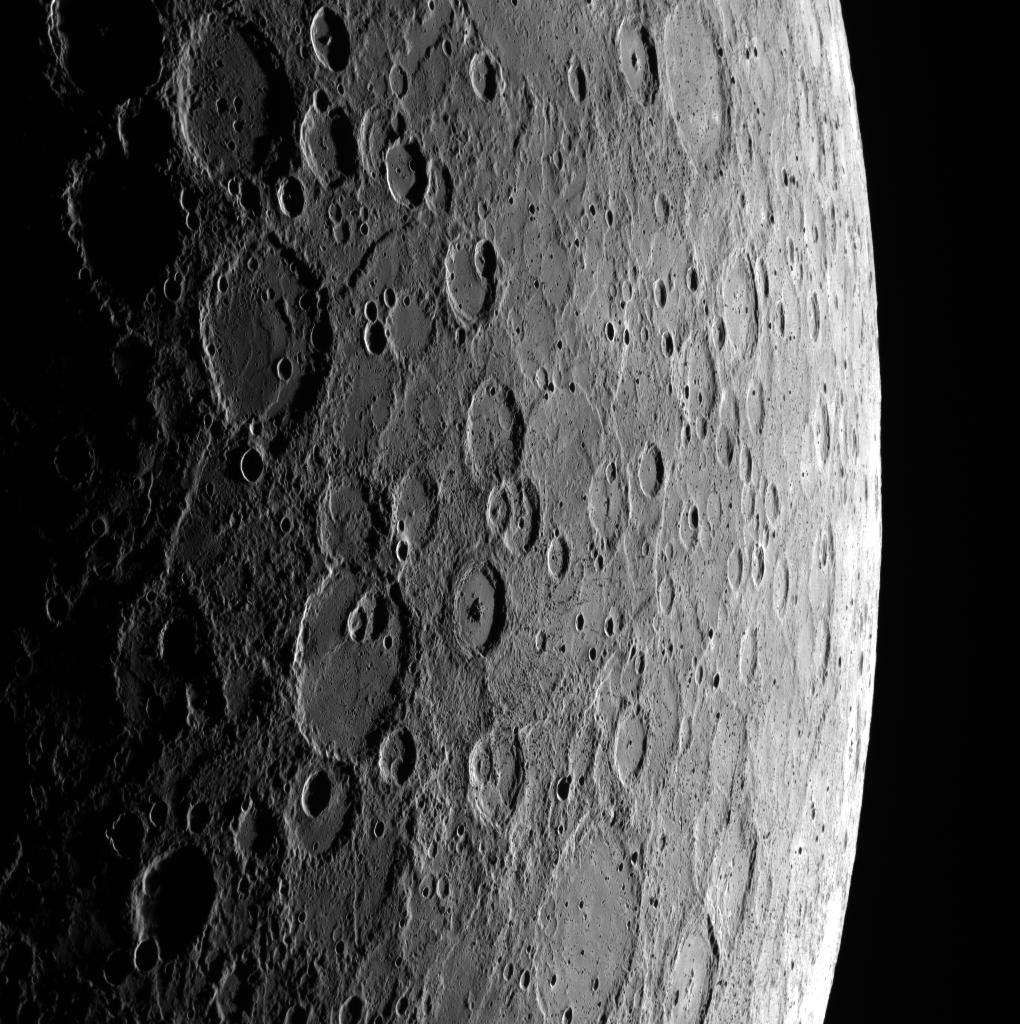
Direct adress for the full-sized hi-res photo (1020 x 1024 pixels)
Also, check out here to know more about the "why Mercury?".
This one especially picked up my interest:
At Mercury's poles, some crater interiors have permanently shadowed areas that contain highly reflective material at radar wavelengths. Could this material be ice, even though Mercury is the closest planet to the Sun? MESSENGER will find out.
Ice on Mercury? If so, then I guess that water is more present than previously thought all around in the Solar System...
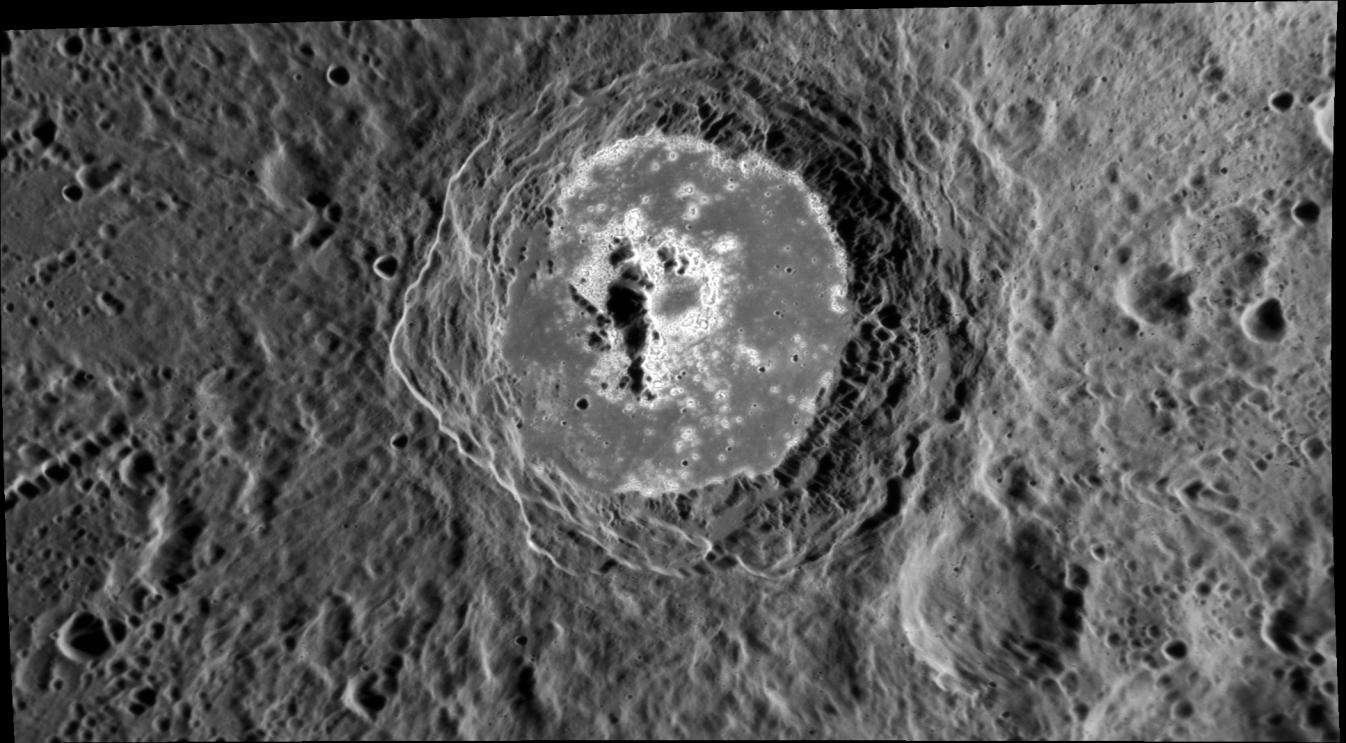
edit on 10-2-2012 by elevenaugust because: (no reason
given)
edit on 10-2-2012 by elevenaugust because: Add pole crater picture
Your on fire!
For those wondering about the central peak of the crater, I can imagine them forming just like we see when you watch a slow motion water drop falling into water. At just the right speed, I can imagine a meteor expelling so much force that the 'earth' would practically liquify as it slams in. Liquid earth rushes inwards towards the center to refill the hole just punched in causing the up-thrust. I'd imagine the speed and size of the meteor would have to be just right to cause this effect.
Cool pic!
For those wondering about the central peak of the crater, I can imagine them forming just like we see when you watch a slow motion water drop falling into water. At just the right speed, I can imagine a meteor expelling so much force that the 'earth' would practically liquify as it slams in. Liquid earth rushes inwards towards the center to refill the hole just punched in causing the up-thrust. I'd imagine the speed and size of the meteor would have to be just right to cause this effect.
Cool pic!
I wonder if its possible if the meteorite that caused the crater was rich in metals that liquefied. Hot enough to melt metals with the crater offering
some colling effects, keeping the metal as a solid or somewhat liquid (like mercury).
reply to post by Qumulys
Thanks!
Well, to tell you the truth, I think that we are actually living in an exciting age, not for what happened everyday on Earth that makes the news (that only show the madness of human mankind and that makes me really sad); but for the (almost) daily space exploration news that reveals the incredible Universe variety and that the chances of life to have been spread widely are increasing from day to day.
This really gives me the strong impression that we are on the merge of the most important discovery of humankind
Just a quick look at the last APOD picture could be enough to convince lots of us:
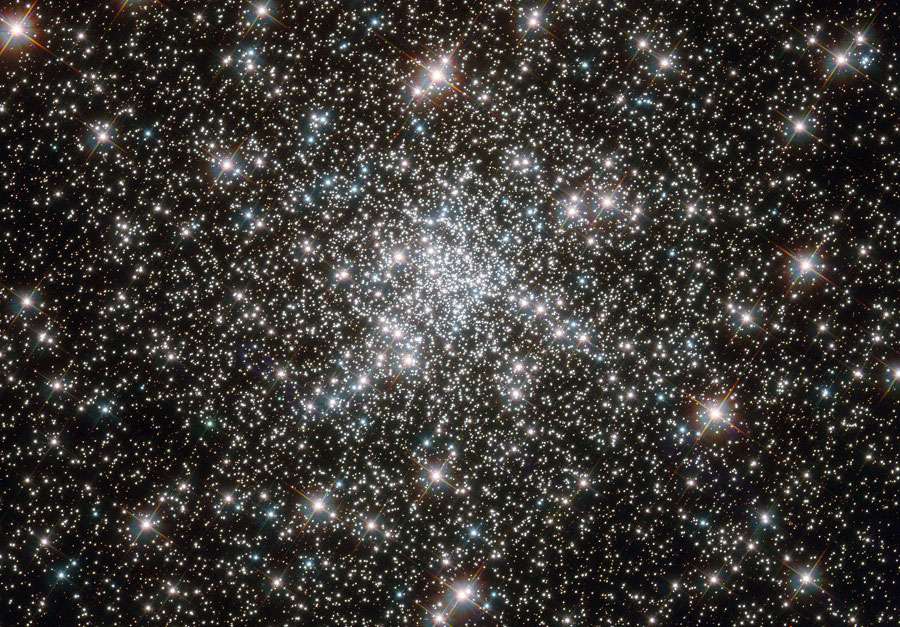
Edit to add: let's also not forget the recent discoveries about all the exosystems:
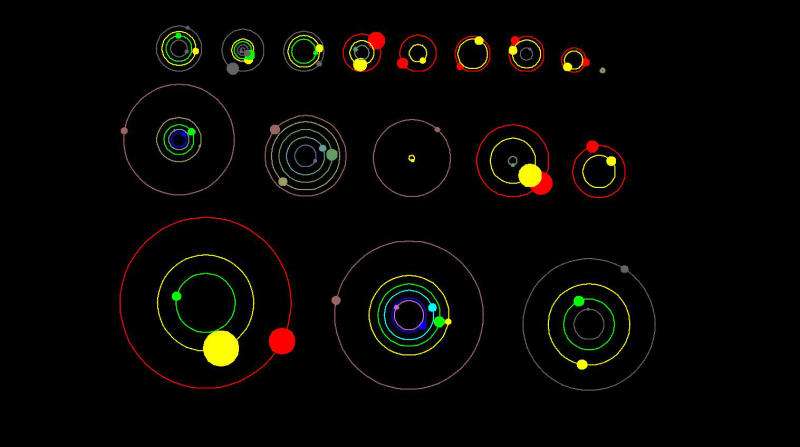
Thanks!
Well, to tell you the truth, I think that we are actually living in an exciting age, not for what happened everyday on Earth that makes the news (that only show the madness of human mankind and that makes me really sad); but for the (almost) daily space exploration news that reveals the incredible Universe variety and that the chances of life to have been spread widely are increasing from day to day.
This really gives me the strong impression that we are on the merge of the most important discovery of humankind
Just a quick look at the last APOD picture could be enough to convince lots of us:

Over 10 billion years old, NGC 6752 holds over 100 thousand stars in a sphere about 100 light-years in diameter, but the Hubble image frame spans the central 10 or so light-years and resolves stars near the dense cluster core
Edit to add: let's also not forget the recent discoveries about all the exosystems:

This artist's concept shows an overhead view of the orbital position of the planets in systems with multiple transiting planets discovered by NASA's Kepler mission.
All the colored planets have been verified. More vivid colors indicate planets that have been confirmed by their gravitational interactions with each other or the star. Several of these systems contain additional planet candidates (shown in grey) that have not yet been verified. (Credit: NASA Ames/UC Santa Cruz)
edit on 10-2-2012 by elevenaugust because: (no reason given)
I thought Mercury would of been more red and brighter since it is closer to the Sun? Kind of looks like the Moon to me...Where is Phage at?
reply to post by elevenaugust
Stunning APOD! The immensity of the universe is almost beyond comprehension, perhaps it is!
I've been spending a tonne of time lately on the Planet Hunters website keeping an eye on the data to find exo-planets. Its the best I can do to get "close" to the stars. Some of the patterns that pop up are truly beautiful and exciting. As yet, I've not discovered my own exo-planet, but to have the chance to be a co-discoverer is the best use of the internet ever (sorry ats!).
Stunning APOD! The immensity of the universe is almost beyond comprehension, perhaps it is!
I've been spending a tonne of time lately on the Planet Hunters website keeping an eye on the data to find exo-planets. Its the best I can do to get "close" to the stars. Some of the patterns that pop up are truly beautiful and exciting. As yet, I've not discovered my own exo-planet, but to have the chance to be a co-discoverer is the best use of the internet ever (sorry ats!).
reply to post by KonquestAbySS
Don't ask for phage you lazy ATSer. Do the research yourself! Mercury is not much different than a moon on the surface with all of the crater features, but as far as I know it's not much like mars........ At least being red.
Besides that, it's been proven several times that the surface of mars is much more akin to the surface of Arizona, or Nevada. Also, mars , while having a reddish surface, has an opaque blue sky. NASA religiously over enhances pics from mars to appear more red. Maybe they adjust pics from mercury to look more moonish.
Don't ask for phage you lazy ATSer. Do the research yourself! Mercury is not much different than a moon on the surface with all of the crater features, but as far as I know it's not much like mars........ At least being red.
Besides that, it's been proven several times that the surface of mars is much more akin to the surface of Arizona, or Nevada. Also, mars , while having a reddish surface, has an opaque blue sky. NASA religiously over enhances pics from mars to appear more red. Maybe they adjust pics from mercury to look more moonish.
reply to post by W3RLIED2
Then why does Mercury have a shadow on the left hand side? You call me lazy, but I am simply asking for expertise. That would be something that the Moon would look like.
Then why does Mercury have a shadow on the left hand side? You call me lazy, but I am simply asking for expertise. That would be something that the Moon would look like.
Safe to say I'm not the only one slightly convinced this is not mercury?
Originally posted by KonquestAbySS
I thought Mercury would of been more red and brighter since it is closer to the Sun? Kind of looks like the Moon to me...Where is Phage at?
It does draw a remarkable resemblance of the moon......
That I will say!
Originally posted by KonquestAbySS
Then why does Mercury have a shadow on the left hand side? You call me lazy, but I am simply asking for expertise. That would be something that the Moon would look like.
Why wouldnt it have a shadow?
Its a spherical object, lit by the sun.
Half will be in daylight, half will be in shadow.
Just like any planet.
And for what its worth, the color should not come as a surprise because this planet has been seeen since forever.
First with eyes-only, then with telescopic aid for hundreds of years.
Then in 1974 there was the Mariner 10 mission that visited the planet.
You shouldnt be surprised at any of this. Especially after doing the google search that people suggested.
Originally posted by punisher2012
Safe to say I'm not the only one slightly convinced this is not mercury?
Here's a photo from 1974...
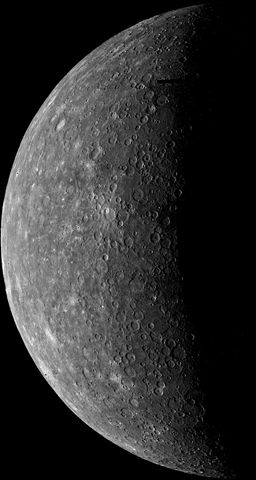
reply to post by KonquestAbySS
Negative. Messenger is a mercury mission, the picture is of mercury.
I think it's a cool picture... Unsure why any of you would deny that this is the little planet next to the sun......
Negative. Messenger is a mercury mission, the picture is of mercury.
I think it's a cool picture... Unsure why any of you would deny that this is the little planet next to the sun......
reply to post by W3RLIED2
I never said anything about Messenger not being a Mercury mission. It could be Mercury it really doesn't matter it is inhabitable. Waste of money just to take a photo that looks similar to the Moon.
I never said anything about Messenger not being a Mercury mission. It could be Mercury it really doesn't matter it is inhabitable. Waste of money just to take a photo that looks similar to the Moon.
Why is it i can look at a planet through a telescope and see stars as far as the eye can see, YET when pictures of planets get released their is no
star in sight just a black background. Its been one of the strongest points of evidence that the moon landings were faked, so this may also be
evidence that all the pictures released by NASA or sister agencies around the world could be manipulated or Photoshopped images. Stars are everywhere
except in photographs taken by space agencies or deep outer space it seems.
quick edit:
i just refreshed the "recent post" page and coincidentally enough i came across which appeared at the top which questioned the "no stars in space" theory i have, i didn't honestly think anyone else noticed this... anyway the post is here for those interested
www.abovetopsecret.com...
i just refreshed the "recent post" page and coincidentally enough i came across which appeared at the top which questioned the "no stars in space" theory i have, i didn't honestly think anyone else noticed this... anyway the post is here for those interested
www.abovetopsecret.com...
Originally posted by camouflaged
quick edit:
i just refreshed the "recent post" page and coincidentally enough i came across which appeared at the top which questioned the "no stars in space" theory i have, i didn't honestly think anyone else noticed this... anyway the post is here for those interested
www.abovetopsecret.com...
Sigh.
Yes, you see stars with your eyes at night, and in your telescope. You can even take a picture of them with a camera, IF your exposure is long enough.
However if the object you are taking a picture of is very bright, the exposure time has to be quicker so that you do not over expose and ruin the picture.
I have lots of star shots, that i had to expose for 15 seconds to get on my camera. Shots made through the telescope of the moon have to be almost as quick as a daytime shot like 1/250 of a second, much to fast for the faint light of stars.
I'm surprised someone hasn't jumped up and screamed CGI yet.....
reply to post by camouflaged
This is the sort of conversation one expects to have with first graders. This is my response to someone talking about still not being able to see stars from the moon even if they turn away from the sun. Hope this helps.
When you are looking through a telescope at night from earth you are about a quarter million miles away from the moon, right? If you are ON the moon you are on the moon, if the surface is lit it is daytime. Atmosphere has nothing to do with ant of the conversation.
"Simply turning away from the sun your pupils would still be dilated, and would remain dilated due to the bright lunar surface. You can test the fact out yourself. Leave a very bright sunny boardwalk on a beech, and walk into a very dim bar, and see how long it will take your eyes to adjust to see the hot babe in a dark corner.
Now once your eyes are adjusted to the dim light, walk back outside and see how fast you see the light. Now after your pupils re-dilate, from the boardwalk look back into that bar through the door and see if you can see that hot babe from outside."
This is the sort of conversation one expects to have with first graders. This is my response to someone talking about still not being able to see stars from the moon even if they turn away from the sun. Hope this helps.
When you are looking through a telescope at night from earth you are about a quarter million miles away from the moon, right? If you are ON the moon you are on the moon, if the surface is lit it is daytime. Atmosphere has nothing to do with ant of the conversation.
"Simply turning away from the sun your pupils would still be dilated, and would remain dilated due to the bright lunar surface. You can test the fact out yourself. Leave a very bright sunny boardwalk on a beech, and walk into a very dim bar, and see how long it will take your eyes to adjust to see the hot babe in a dark corner.
Now once your eyes are adjusted to the dim light, walk back outside and see how fast you see the light. Now after your pupils re-dilate, from the boardwalk look back into that bar through the door and see if you can see that hot babe from outside."
So, anyway, about the pictures...
What could that be in the crater? Does Mercury have any kind of atmosphere? I imagine ice would sublimate into space, but maybe the temperature doesn't get high enough deep in those craters?
What could that be in the crater? Does Mercury have any kind of atmosphere? I imagine ice would sublimate into space, but maybe the temperature doesn't get high enough deep in those craters?
Originally posted by eriktheawful
I have lots of star shots, that i had to expose for 15 seconds to get on my camera. Shots made through the telescope of the moon have to be almost as quick as a daytime shot like 1/250 of a second, much to fast for the faint light of stars.
No matter how many times this is said, people just dont want to hear it.
For you disbelievers, try it for yourself.
Take a photo of the moon through a telescope or long telescopic lens, or failing that, jury rig up something that lets you take a photo of the moon through binoculars.
Once you actually TRY IT FOR YOURSELF (as opposed to sitting on your behind reading conspiracy websites) you will find much to your amazement that to get a properly exposed photo, there will be no stars since the exposure is too short.
The moon is a rock lit by the sun.
Same exposure rules apply to a rock you can walk outside in the daytime and photograph here on earth.
Same exposure, same albedo, same distance from the sun, same amount of light being reflected.
new topics
-
USSS Agent Fired for Having Sex In Michelle Obama's Bathroom
US Political Madness: 3 minutes ago -
Watching TV
Jokes, Puns, & Pranks: 2 hours ago -
RFK is Trumps health pick
2024 Elections: 10 hours ago
top topics
-
RFK is Trumps health pick
2024 Elections: 10 hours ago, 15 flags -
Thanksgiving 2024
Member Art: 16 hours ago, 14 flags -
Watching TV
Jokes, Puns, & Pranks: 2 hours ago, 2 flags -
USSS Agent Fired for Having Sex In Michelle Obama's Bathroom
US Political Madness: 3 minutes ago, 1 flags
active topics
-
RFK is Trumps health pick
2024 Elections • 8 • : marg6043 -
The Acronym Game .. Pt.4
General Chit Chat • 954 • : Encia22 -
USSS Agent Fired for Having Sex In Michelle Obama's Bathroom
US Political Madness • 0 • : CarlLaFong -
The art of being offended
Social Issues and Civil Unrest • 37 • : MetalThunder -
FLORIDA Sues Biden-Harris FEMA for Denying Disaster Assistance to Homeowners with TRUMP Signs.
US Political Madness • 43 • : Vermilion -
Post A Funny (T&C Friendly) Pic Part IV: The LOL awakens!
General Chit Chat • 7772 • : baddmove -
Qatar kicks out HAMAS
Middle East Issues • 20 • : bastion -
President-Elect DONALD TRUMP's 2nd-Term Administration Takes Shape.
Political Ideology • 192 • : MetalThunder -
Alex Jones Reinstated on X
Education and Media • 87 • : MetalThunder -
Watching TV
Jokes, Puns, & Pranks • 1 • : PorkChop96
